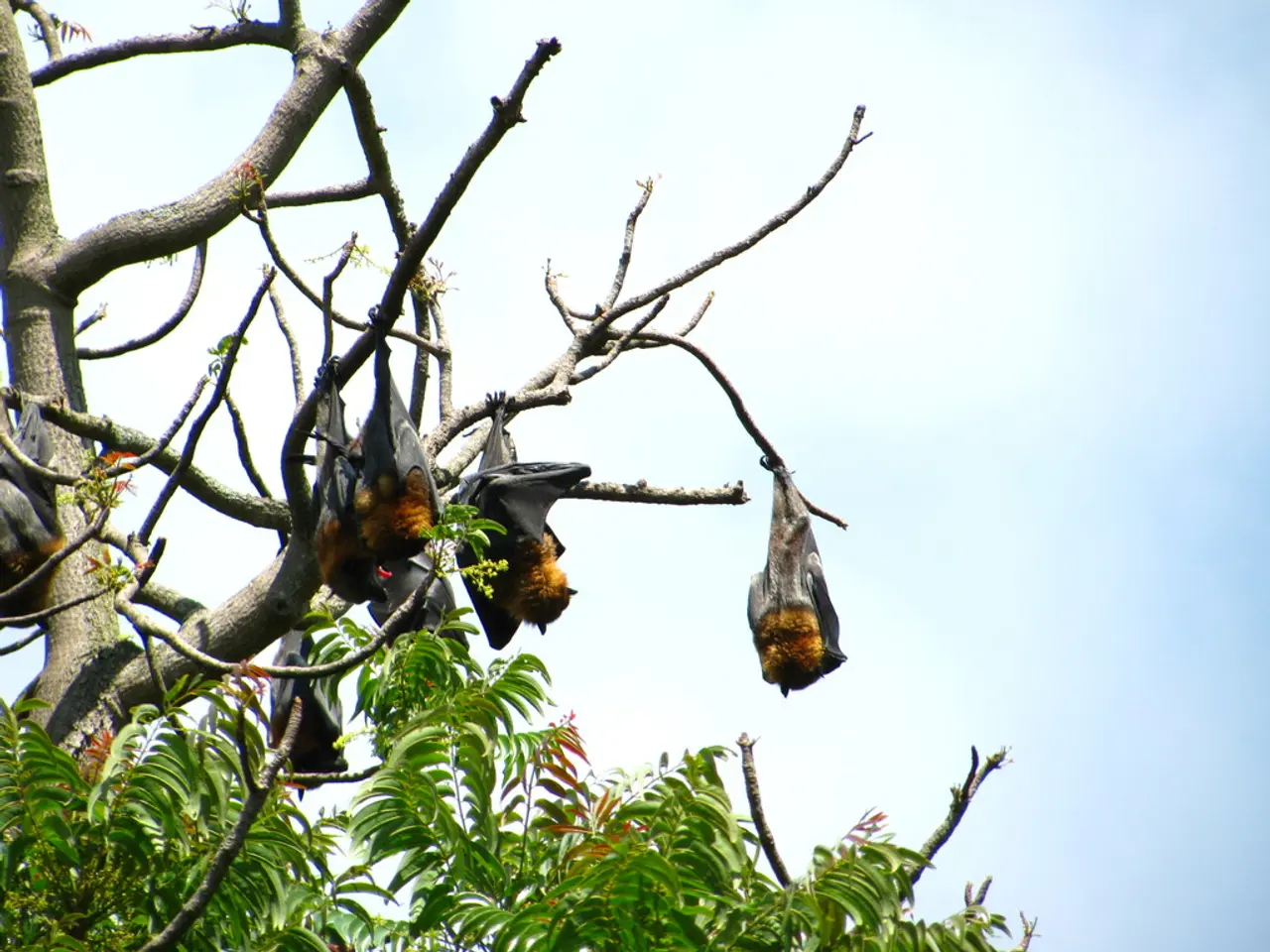Guidance on nurturing and tending to kohlrabi plants
Kohlrabi, a member of the Brassica family, is an unusual yet delicious vegetable that has gained popularity for its decorative fleshy green or purple globes growing beneath green or purple leaves. This uncommon vegetable, which can be used as an alternative to meat in recipes and works well with Indian spices, is filling and high in protein, dietary fiber, calcium, vitamin C, and iron.
To grow kohlrabi successfully, follow these key guidelines. Planting kohlrabi seeds about ¼ inch deep in loose, average soil is ideal. It is best planted 4 to 6 weeks before the last frost in cooler soil conditions, as kohlrabi germinates best when the soil is cool. Seeds typically sprout in 7-14 days[1][3]. You can also start seeds indoors 4 to 6 weeks before transplanting outdoors, especially in cooler climates or to extend the growing season[5].
Keep soil consistently moist to encourage tender bulbs and prevent woody texture or bolting (premature flowering). Mulching helps retain moisture and suppress weeds, which benefits kohlrabi growth[1][2]. Grow kohlrabi in a sunny site in light, fertile soil, kept moist and weed-free.
Growing kohlrabi in cooler weather is essential. Early spring or fall planting tends to be most successful because hot, dry conditions cause bolting and poor texture. Cold temperatures can also induce bolting, so avoid sowing too early outdoors and harden off indoor-grown plants carefully[2][5]. Harvest kohlrabi when the bulbs reach about 3 to 4 inches in diameter for optimal tenderness, though smaller bulbs can be picked for a more delicate texture[1][3].
Pest and disease management is crucial for kohlrabi cultivation. Kohlrabi, a brassica, is prone to typical brassica pests like cabbage caterpillars (cabbage worms). These caterpillars eat leaves and damage the plant[2]. Protection strategies include covering plants with fine-mesh insect-proof netting to prevent caterpillar infestation and regularly inspecting leaves for caterpillars and eggs and removing them manually if found[2].
Slugs can be a sporadic pest under cool, moist, and residue-heavy conditions, chewing holes in leaves and contaminating crops. Managing crop residues and eliminating wet, shaded habitats reduce slug damage. Slug control is especially important where brassicas follow crops like corn residue, which provides slug habitat[4].
Protection and prevention are the best courses of action against pests and diseases in kohlrabi, with fine mesh netting often effective. Kohlrabi harvest can continue until December, or before if the leaves start yellowing. Harvesting kohlrabi involves cutting it at the root and removing the oldest leaves to keep the plant fresh.
Specialist seed suppliers offer the widest range of kohlrabi varieties. Sowing time depends on the variety and whether seed is being sown direct outside or started off under cover before planting outdoors. Green kohlrabi is faster growing and should be sown from March to June, while purple kohlrabi is slower growing but hardier and should be sown in summer. Sowing multiple, successional sowings ensures a continual supply of kohlrabi.
Young plants or plug plants may be available to buy in late spring. Kohlrabi is sown direct in moist soil in shallow drills 1.5cm deep, with rows spaced 30cm apart and seedlings thinned to space individual plants 15cm apart.
Sources for buying kohlrabi seeds or plants include Crocus, Suttons, Thompson & Morgan, and Rocket Gardens. With these guidelines in mind, growing and caring for kohlrabi can be an enjoyable and rewarding experience for gardeners and home cooks alike.
*To enhance your home-and-garden lifestyle, consider growing kohlrabi, a unique vegetable with decorative green or purple globes that thrive in sunny sites with light, fertile soil.* For a successful kohlrabi garden, follow the guidelines for planting, maintenance, and pest control to grow this protein-rich and nutritious vegetable in your home-and-garden, contributing to your healthful lifestyle and home-cooked meals.




![Video Explanation: An Overview of Explainer Videos [Including Examples and Definition]](/en/content/images/size/w1280/format/webp/20250721153209_explainer-video-examples-meaning.jpeg)